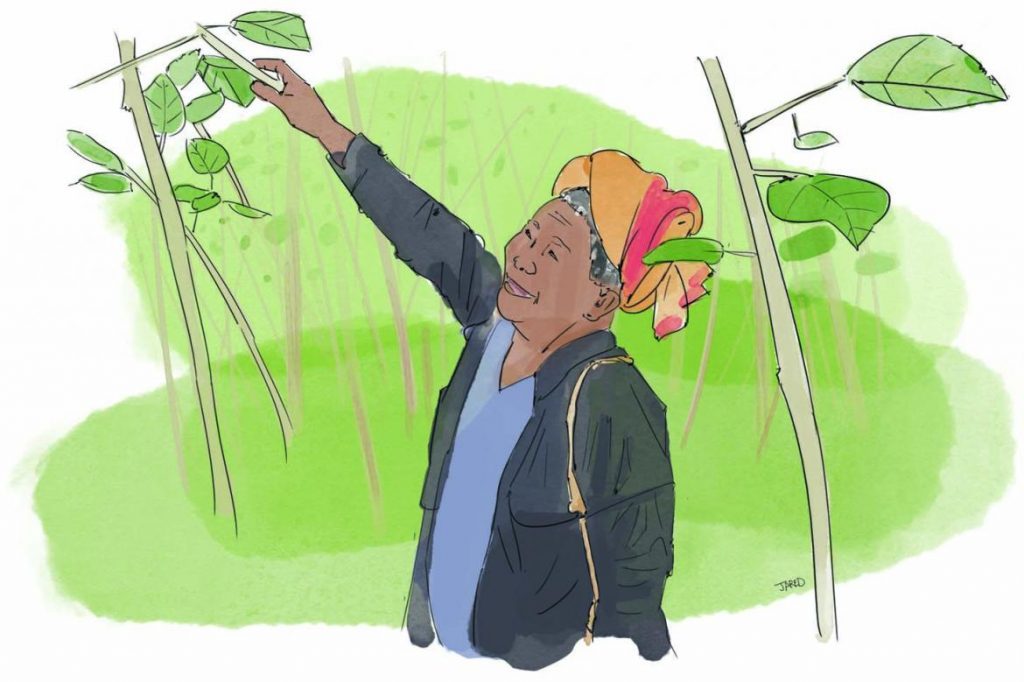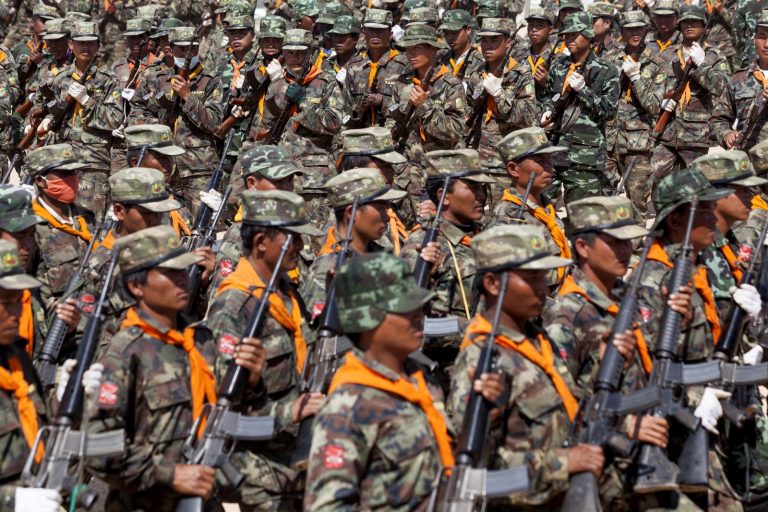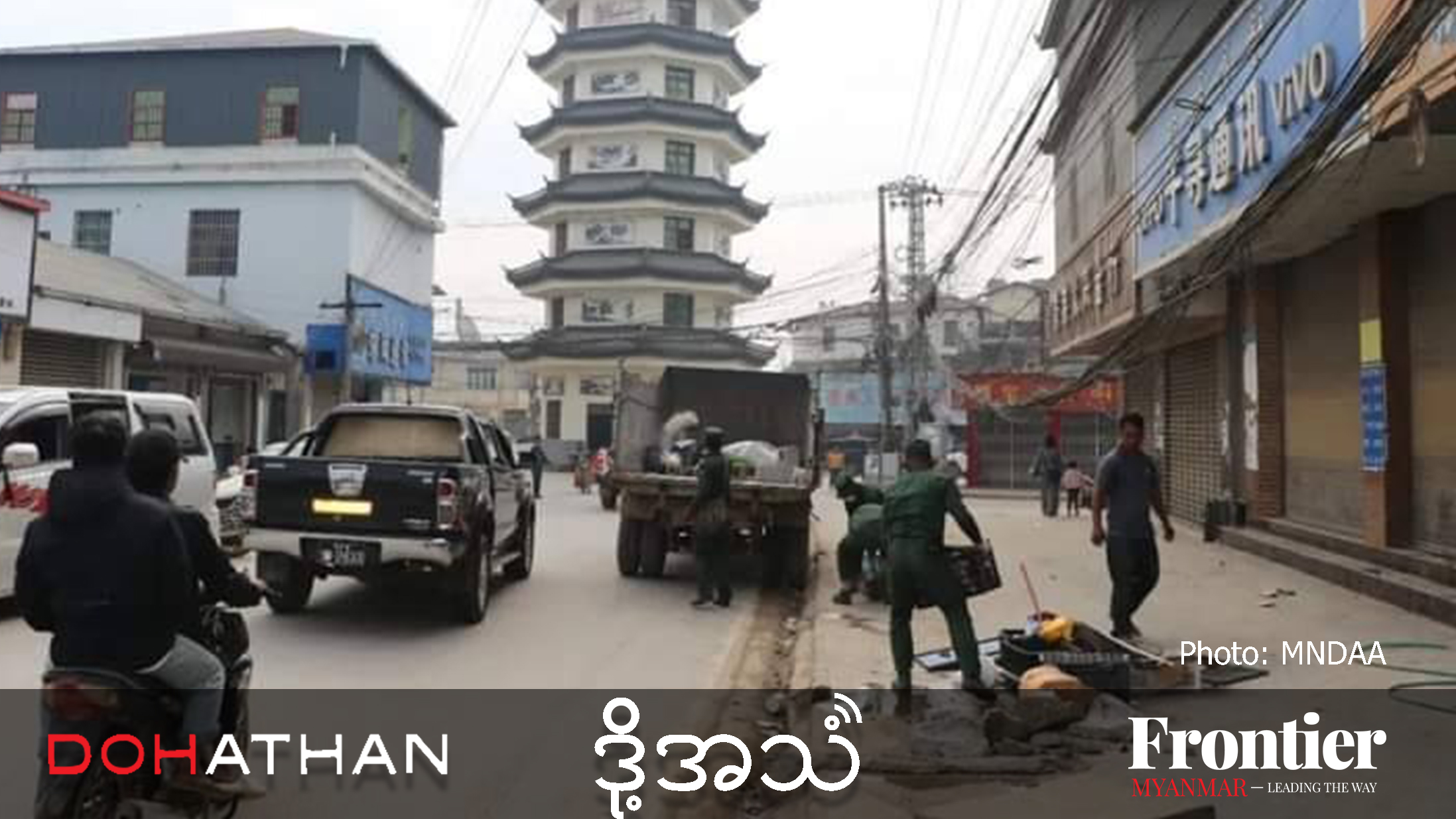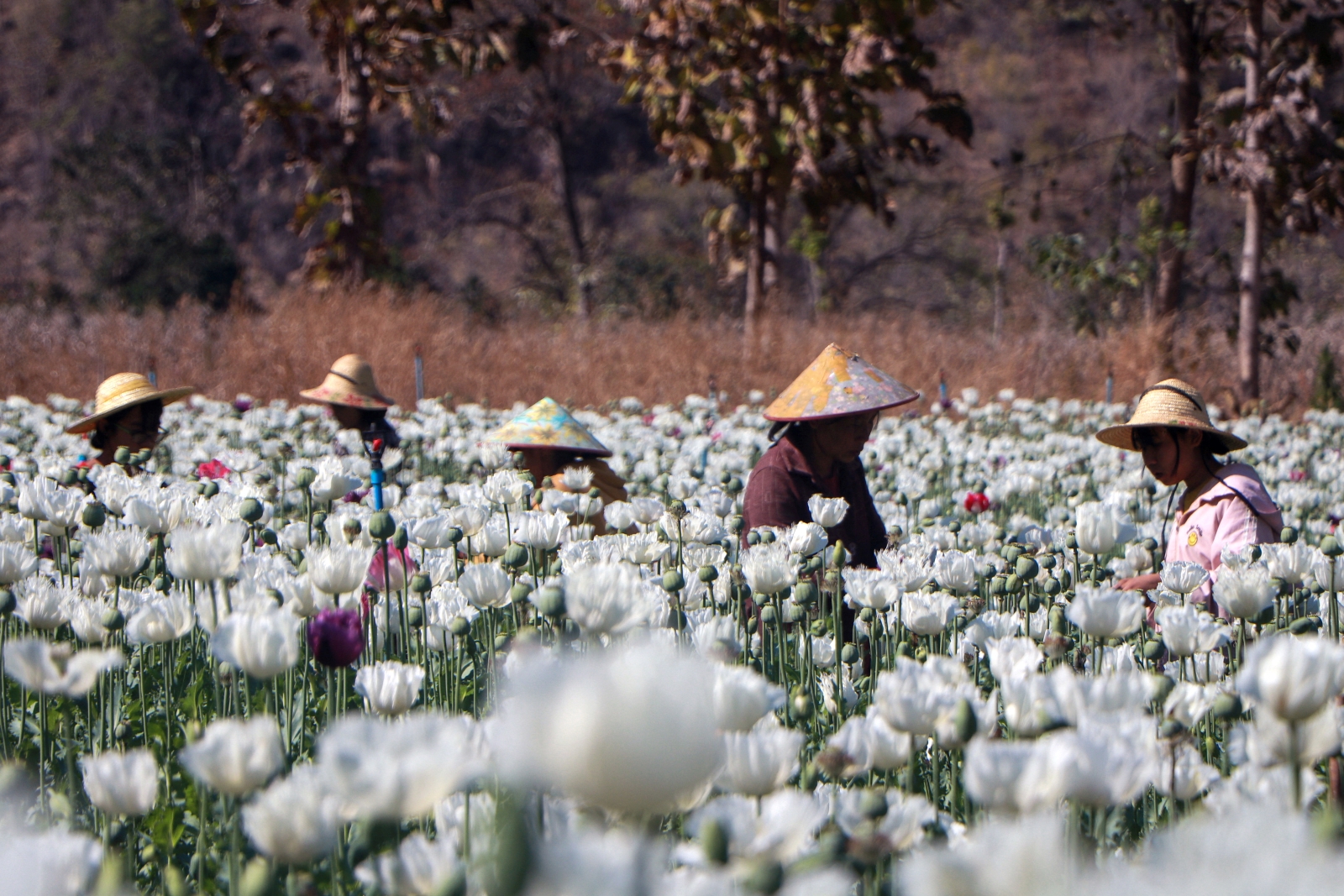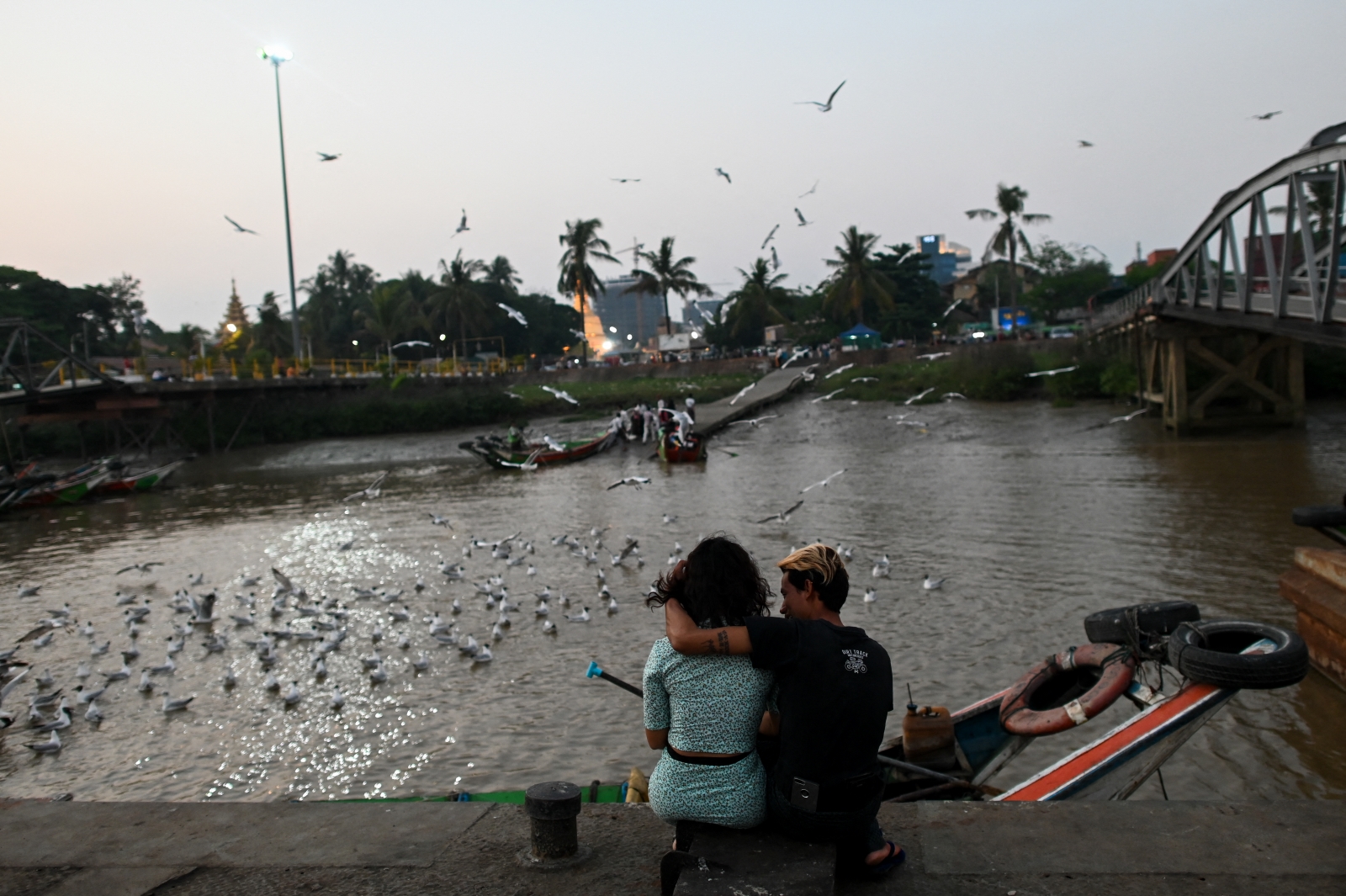A Pa-O village in southern Shan State has seen tough times but achieved modest prosperity, thanks in part to a marketable leaf.
By BEN DUNANT | FRONTIER
ON A hillside overlooking Inle Lake in southern Shan State, Meh Mung stood in a field dense with cordia plants. Their bare, skinny stems rose high above her head, ending in flat green leaves. Using a bamboo pole fitted with a hook, the 66-year-old woman pulled down the stems to pluck the leaves. After being baked dry on stoves, the leaves are sold as wrappers for cheroots, traditional Myanmar cigars, providing the village of Loi Kaw with its main source of income.
“I’m too old for this,” she muttered. Known to the village as “Mother Mung”, she was dressed in a thick, navy-blue jacket and red-and-yellow turban, which marked her as a member of the Pa-O ethnic group. The Pa-O have traditionally occupied the ridges and hilltops of a large tract of southern Shan, practising shifting cultivation in cleared forest land; but with the spread of cordia and other cash crops, such as maize and tobacco, their fortunes are increasingly tied to the national economy.
“I miss my boys,” Meh Mung said, her lined face breaking into a smile as she thought of them. Her two sons were far away. One has a menial job in Thailand, the other in Thaton, a town 500 kilometres away on the Mon State coast. Villages in the area are populated mostly by the very young and the elderly. There are few jobs or educational opportunities for people of working age, so they leave quickly.
However, being a landowner in a region blessed with rich red soil, Meh Mung didn’t consider herself unlucky. Two months of picking and baking cordia leaves with her husband earned the couple more than K2 million. This would support them for much of the year, she said.
Support more independent journalism like this. Sign up to be a Frontier member.
Meh Mung’s village, Loi Kaw, is not connected to the electricity grid, has limited mobile phone reception and is reached on dirt roads that turn to impassable sludge during the rains. But while they lack the amenities of the Shan and Intha villages on the valley floor, the Pa-O of Loi Kaw can recall far harder times.
Before Myanmar became independent in 1948, the Pa-O endured what their leaders describe as the “feudal” rule of the Shan princes, the former masters of what is now Shan State. After that came decades of conflict with Myanmar’s military rulers. A ceasefire between the Tatmadaw and the insurgent Pa-O National Army in 1991 brought stability to this area of southern Shan, though not freedom or prosperity.
Under the ceasefire, poor farmers continued to rely on growing opium poppy, which provided a means of subsistence that persists in remoter villages. The Pa-O National Organisation, the PNA’s political wing, became an ally of the Tatmadaw and ruled the area in a similarly hard-fisted manner, while several PNO leaders were granted lucrative commercial concessions and joined Myanmar’s crony business elite. For their loyalty, the PNO were also granted a self-administered zone in the 2008 Constitution. The SAZ covers the townships of Hopong, Hsi Hseng and Pinlaung.
These hills, though isolated, were not only subjected to the violence of the military regime, but also its mishandling of the economy. U Kyaw Khin, 45, whom I met baking cordia leaves on a wood-fired stove in his house in Loi Kaw, told me how the notorious demonetisation of 1987 had dispossessed some people in the area, despite few locals using much cash at the time.
On September 5, 1987, without prior warning, dictator General Ne Win declared K25, K35 and K75 notes to be worthless, voiding most of the cash in circulation. Kyaw Khin said that a group of wily and well-connected men in Yangon, then called Rangoon, were tipped off about the demonetisation shortly before it happened and hastily set off to remote hill villages, including Loi Kaw, where they bought up farmland from villagers in exchange for wads of cash that quickly become worthless.
Kyaw Khin shook his head. Though he told the story unprompted, he declared there was no use raking up the past. As he packed the dried brown leaves in stacks that rose to the ceiling, he claimed his household earned double what Meh Mung’s did in the annual harvest. The people of Loi Kaw had not only survived but, in their own way, thrived.


